Everyone likes flower gardening these days. Looking at colourful flowers not only diverts your attention but also brings you closer to nature and helps in creating a positive environment. Flower gardening is not just a hobby but also helps in keeping you relaxed.
If you are a beginner and wondering how to grow beautiful flowers in your garden, then there is no need to worry! Flower gardening can be easy if you choose the right flowers, take proper care and follow basic gardening tips.
In this article we will discuss the best flowers, planting techniques, maintenance tips and common mistakes so that your garden remains beautiful and blooming in every season!
So let’s start the journey of a beautiful and blooming flower garden!
Choosing the Right Flowers
If you are starting flower gardening, then choosing the right flowers is important. Every flower has different requirements like sunlight, water and climate. If you select flowers according to the season and space, then your garden will always be in bloom!
a. Climate & Season-Based Flowers
Different types of flowers grow well in every season. Plants planted in the wrong season will not survive, so select the flowers according to the climate.
Summer Flowers
- Marigold
- Sunflower
- Petunia
- Zinnia
- Hibiscus
Winter Flowers
- Rose
- Pansy
- Dahlia
- Chrysanthemum
- Carnation
Monsoon Flowers
- Jasmine
- Rain Lily
- Tuberose
- Balsam
- Cosmos
b. Perennials vs Annuals – Long-term or Short-term Flowers?
Perennial flowers are those that bloom repeatedly and grow every year. Examples: Rose, Hibiscus, Jasmine, Bougainvillea.
Annual flowers are those that bloom only for one season and then they have to be planted again. Examples: Marigold, Petunia, Pansy, Dahlia. If you want a low-maintenance garden than perennial flowers are the best option.
c. Indoor vs Outdoor Flowers
If you don’t have much open space, then you can choose these flowers for balcony or indoor gardening:
Best Indoor Flowers
- Peace Lily
- Orchid
- Anthurium
- Begonia
Best Outdoor Flowers
- Rose
- Marigold
- Bougainvillea
- Sunflower
d. Low Maintenance Flowers for Beginners
If you are a beginner and do not have time for daily gardening, then these low-maintenance flowers will be best:
- Marigold
- Periwinkle (evergreen)
- Bougainvillea
- Sunflower
- Zinnia
Tip: If you mix different colors and blooming patterns, your garden will look even more attractive and beautiful!
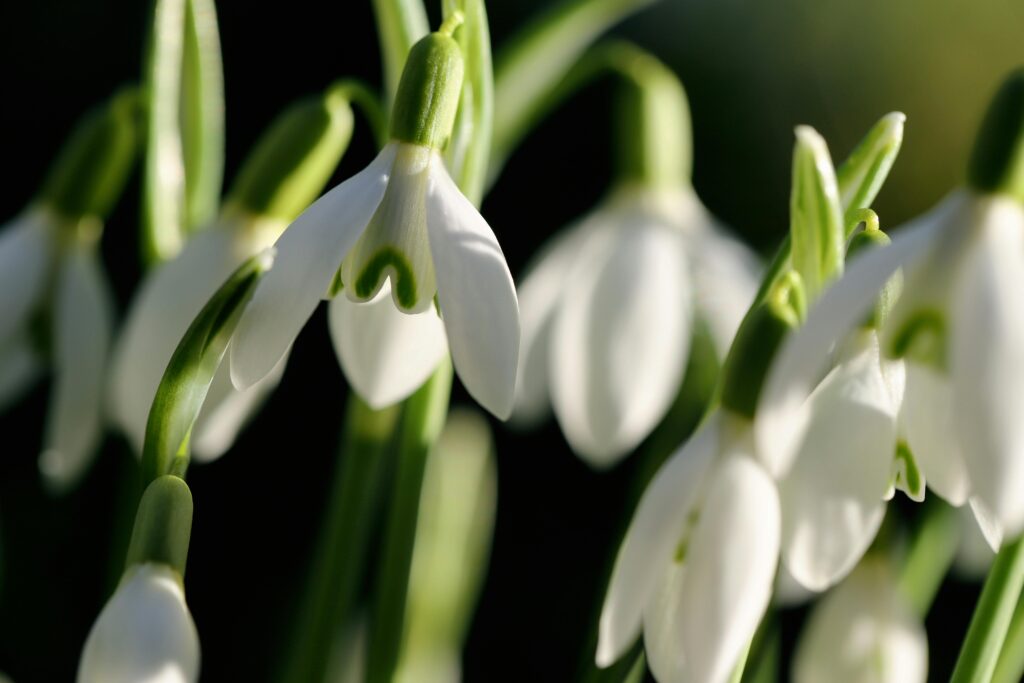
Essential Tools and Materials for Flower Gardening
If you are starting flower gardening, then gardening can be difficult without the right tools, the right tools not only make gardening easy but also help in keeping the plants healthy and well-maintained. Let’s see the most important gardening tools and materials that are a must-have for beginners.
a. Basic Gardening Tools
- Used for digging the soil and planting plants.
- Helpful for planting seeds and filling soil in pots.
- For cutting wilted flowers and extra branches.
- Helps in healthy growth and more blooming.
- For loosening the soil and removing weeds.
- Improves soil aeration which is essential for plant growth.
- To protect hands from soil, thorns and cuts.
- Use comfortable and grippy gloves so that work is easy.
- To gently water pots or ground plants.
- To avoid overwatering, sprinkler system or drip irrigation can also be used.
- Useful for soil turning and weeding.
- Useful in large garden beds.
b. Important Materials for Flower Gardening
Best Soil Mix (Choice of good soil)
- Rich, well-draining and compost-mixed soil is best for flower plants.
- Improve the quality of soil by mixing cocopeat, compost and sand.
Organic Compost / Fertilizers (Manure and Fertilizers)
- Plants need nutrition-rich compost for healthy and more blooming.
- Best organic fertilizers:
- Vermicompost (earthworm compost)
- Cow Dung Manure (cow dung compost)
- Banana Peel Fertilizer (banana peel compost)
- Liquid Compost (water soluble compost)
Mulching Material
- Mulching helps retain soil moisture and prevents weeds from growing.
- Dry leaves, wood chips or straw mulch can be used.
Pots & Containers
- If you are doing balcony gardening or small space gardening, then pots and containers are the best option.
- Choose terracotta, plastic or ceramic pots that are well-draining and can tolerate sunlight.
Organic Pesticides
- Neem Oil Spray – Best for natural pest control.
- Garlic Spray / Soap Water – To control aphids and small insects.
c. Additional Helpful Accessories
Plant Support Sticks / Trellis
- A must for climbing flowers like Bougainvillea, Jasmine, Money Plant.
- An easy and organized option for germinating seeds.
- It is best to grow small saplings in a seedling tray before transplanting.
Grow Lights (if you are doing indoor gardening)
- If there is no direct sunlight in your house, then grow lights are useful for plants.
Tip: If you have these essential tools and materials, then your flower gardening will become very easy and enjoyable!
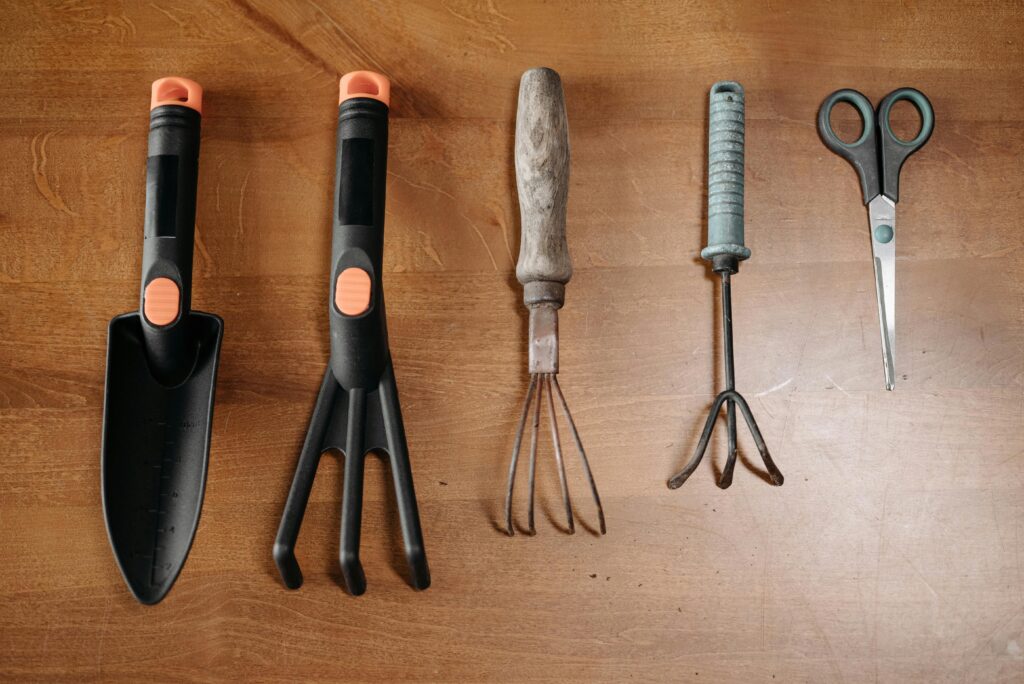
Planting Flowers the Right Way
The greatest joy of a beginner gardener is to plant flowers in the right way, so that they grow healthy and bloom for a longer time.Many people do not know how to plant seeds or plants but due to the wrong method their flowers do not grow well.Many people do not know how to plant seeds or plants but due to the wrong method their flowers do not grow well.
a. Choose the right season and location
Every flower has an ideal season in which the flower grows, but it is important to understand the season and climate for planting.Check whether the flowers need full sunlight or partial shade.Indoor and outdoor plants are different, so select flowers according to the space.
Example:
- Summer flowers – Sunflower, Marigold, Zinnia
- Winter flowers – Rose, Pansy, Dahlia
- Monsoon flowers – Jasmine, Rain Lily, Cosmos
b. Prepare the soil properly
If the soil is fertile and well-draining, then the flowers will grow quickly and remain healthy.
Best Soil Mix for Flowers:
- 40% Garden Soil
- 30% Organic Compost (Vermicompost or Cow Dung Manure)
- 20% Cocopeat (to retain moisture)
- 10% Sand or Perlite (for better drainage)
Tip: Flowers do not grow well in hard soil, so first loosen and aerate the soil.
Do not forget to add organic compost so that the plants get proper nutrition.
c. How to plant seeds (seeds) or plant saplings?
You can grow flowers in 2 ways – from seeds or from saplings (small plants).
Option 1: Flower Planting from Seeds (Seed Sowing Method)
- Step 1: First take high-quality seeds which are fresh and healthy.
- Step 2: Put the seeds in ½ inch deep soil in a pot or garden bed and cover them lightly.
- Step 3: Water them gently but do not overwater.
- Step 4: Pay attention to sunlight and air so that germination happens quickly.
- Step 5: Small seedlings will appear in 5-15 days, when they become strong then you can give them more space.
Tip: Do not plant small seeds (Pansy, Petunia) too deep, cover them lightly.Plant large seeds (Sunflower, Marigold) a little deep (1 inch) so that they develop good roots.
Option 2: Planting from saplings or cuttings
If you do not want to grow the plant from seed, then you can plant ready-made saplings or cuttings from the nursery.
- Step 1: Transplant the sapling into the garden bed or pot.
- Step 2: Gently press the soil to prevent damage to the roots.
- Step 3: Avoid direct sunlight in the beginning, keep in light shade to prevent plant shock.
- Step 4: Give light water daily, but do not overwater.
Best Flowers that grow from Cutting:
- Rose
- Hibiscus
- Bougainvillea
- Money Plant
- Chrysanthemum
d. Follow Proper Watering Technique
It is important to water properly, otherwise the plants will either dry up or can be damaged by excess water.
- It is best to water in the morning or evening (do not water in the afternoon as hot soil can damage the roots).
- Soil should be moist but not soggy (overwatering can rot the roots).
- You can use drip irrigation or sprinkler so that water is available evenly.
- Water dries up quickly in container gardening, so keep checking the pots.
Tip: Mulch (with dry leaves or cocopeat) so that moisture is maintained in the soil.If the leaves are turning yellow, then you are probably overwatering.
e. Give support and pruning to plants
If flowers are taken proper care of, they bloom for longer time and remain healthy.
- Support: Give support of trellis or stick to climbing plants like Jasmine, Bougainvillea, Money Plant so that they grow well.
- Pruning: Cut the wilted flowers and extra branches so that new flowers bloom quickly.
- Deadheading: Remove old flowers to make space for new buds.
f.Take care of organic fertilizers and pest control
If you take care of regular fertilizers and pest control, your flowers will look more healthy and fresh.
Best Organic Fertilizers for Flowers:
Tip: If you take care of the right season, right soil and proper care, then your flower garden will always be beautiful and full of blooms!
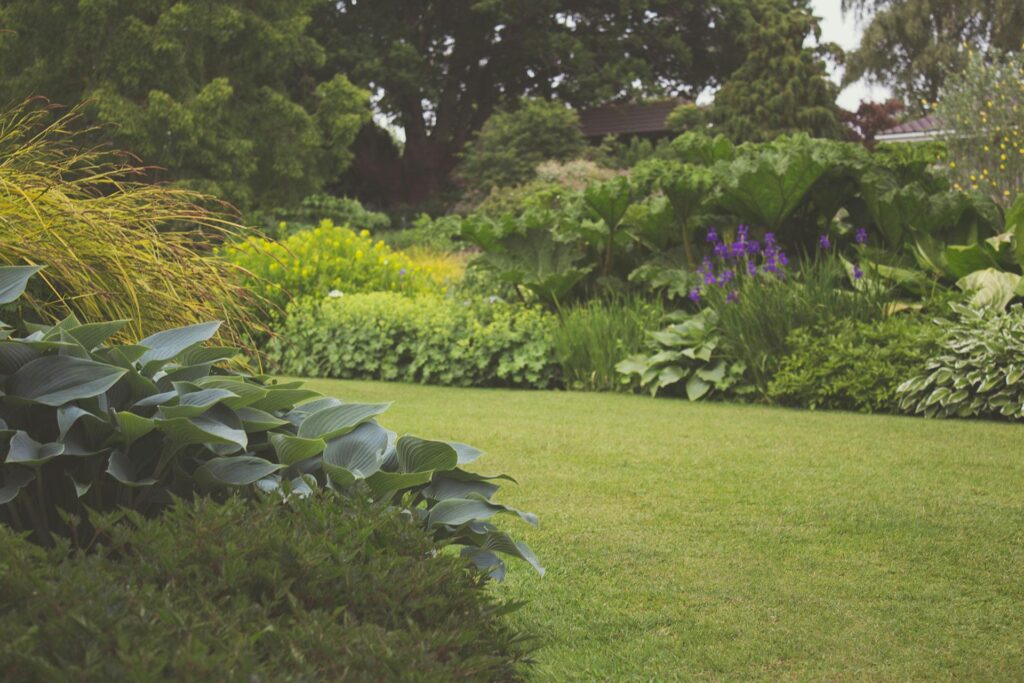
Watering and Maintenance Tips
Watering and maintenance are very important in flower gardening, because it directly affects the health and growth of your plants. If you take care of these things properly, your flowers will always bloom. Here are some important tips that you should include in your garden care routine:
a. Watering the Right Way
- Avoid overwatering: It is important to water flowers, but overwatering can cause water to collect in their roots which can kill them. So check the soil by touching it, if it is dry then water it.
- Water early in the morning or evening: It is better to water in the morning or evening, when there is no sunlight. Watering in the sunlight causes the water in the plants to evaporate very quickly and can harm the plants.
- Use a watering can: You should water your plants slowly and evenly so their roots get proper hydration. It is ideal to water them with a nozzle attached to a watering can.
b. Importance of Mulching
- Retains soil moisture: Mulch (such as dry leaves, grass clippings, or straw) applied to the soil helps retain moisture and eliminates the need to water as frequently. It also controls weeds.
- Regulates temperature: Mulch also maintains soil temperature, which creates a healthy environment for plant growth.
c. Pruning and Deadheading
- Pruning: You should prune your plants from time to time. This not only maintains their shape but also improves their health. Dead leaves and branches should be removed.
- Deadheading: When the flowers fade, they must be plucked. This process helps your plant to give new blooms and makes the plant strong.
d. Protection from Pests and Diseases
- Organic pest control: You can treat your flowers with organic pesticides or neem oil instead of chemicals. This is safe and controls pests naturally.
- Observe the plants: Observe your plants carefully, if you see yellowing leaves or strange spots, it can be an indication of disease. Start treatment quickly so that the disease does not spread.
e. Fertilization Tips
- Use organic fertilizers: It is important to give organic fertilizers to flowers for healthy growth. You can use compost or fish emulsion.
- Avoid over-fertilizing: Giving too much fertilizer can damage the roots of the plant and the plants can become weak. Read the instructions of every fertilizer carefully and use the required quantity.
Designing a Beautiful Flower Garden
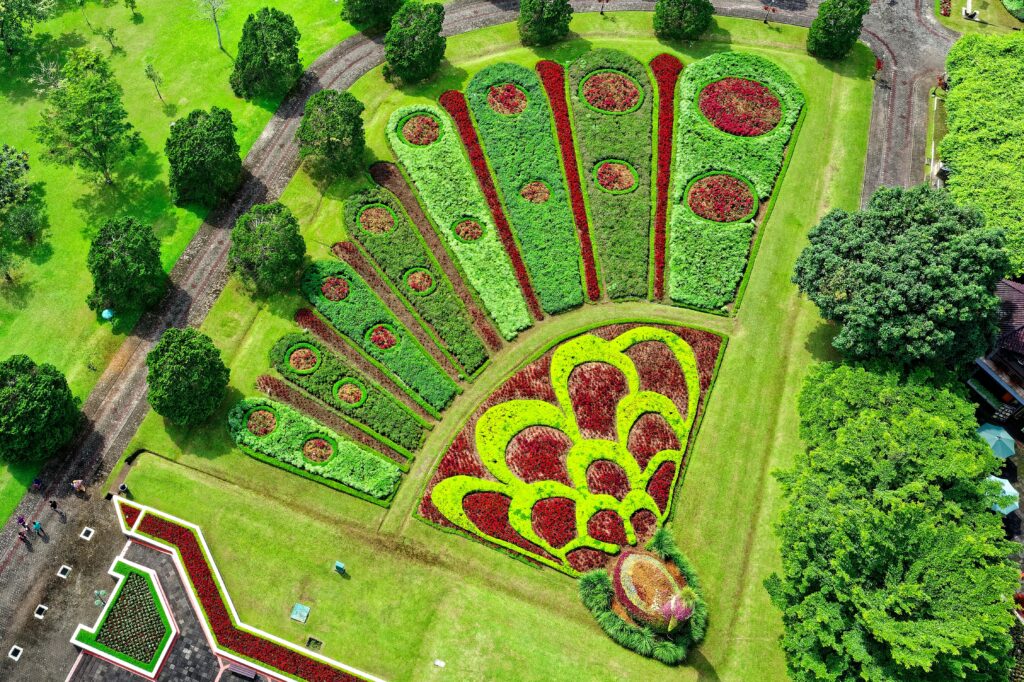
Creating a beautiful flower garden is an art that is possible with proper planning and creativity. When you design your garden, it is very important to pay attention to colors, height, arrangement, and seasonal blooming. Here are some important tips that can make your flower garden even more attractive and organized:
a. Choose the right location
- Flowers need proper sunlight, so you should choose a place that gets 5-6 hours of sunlight daily.
- If you have a shaded area, you can grow shade-loving flowers like begonia and impatiens.
- Air circulation is also important so that the plants remain healthy and do not suffer from fungal diseases.
b.Decide the color combination and theme
- The combination of colors in the garden gives an eye-catching look. You can create different themes according to your choice and space:
- Bright & Vibrant: Marigold, Petunia, Sunflower, Zinnia
- Soft & Pastel: Lily, Hydrangea, Peonies
- Monochrome Garden: Flowers of different shades of the same color
- Butterfly & Bee Garden: Flowers that attract pollinators like Lavender, Cosmos, Sunflower
c. Pay attention to Flower Height and Layering
- Your garden will have a balanced and organized look only when you arrange the plants on the basis of height:
- Back row (tallest plants) – Sunflowers, Hollyhocks, Delphiniums
- Middle row (Medium height flowers) – Roses, Tulips, Marigold
- Front row (Short height flowers) – Petunias, Pansies, Alyssum
This will give the garden a look of depth and symmetry and make every plant look nice.
d. Add pathways and borders
- Pathways and borders are important for giving the garden a structured and neat look.
- You can build brick, stone or wooden pathways which are also helpful for walking.
- You can use small hedges or decorative fences to border flower beds.
e. Include seasonal flowers
- To make the garden look fresh and colorful every season, you should plant seasonal flowering plants:
- Summer flowers: Sunflower, Marigold, Petunia
- Winter flowers: Pansy, Dahlia, Chrysanthemum
- All-season flowers: Rose, Hibiscus, Bougainvillea
f. Use container gardening and hanging baskets
- If you have less space, you can do container gardening. This is also perfect for balcony and terrace gardening.
- Trailing flowers like petunia and fuchsia can be planted in hanging baskets which will add a layered beauty.
g. Add water feature or decorative elements
- You can use small fountain, bird bath or decorative stones to make the garden more attractive.
- These not only look beautiful but also attract birds and butterflies, which are beneficial for your garden.
h. Pay attention to regular maintenance and cleanliness
- It is important to remove weeds and keep the soil healthy so that the flowers bloom well.
- Prune dead flowers and dried leaves from time to time so that new growth comes.
- Keep the pathways and garden decor clean and organized.
Common Mistakes to Avoid in Flower Gardening
Flower gardening is a beautiful and rewarding hobby, but beginners often make some mistakes that can affect the growth of their plants. If you avoid these common mistakes, your garden will be more healthy and vibrant. Here are some of the most common gardening mistakes and ways to avoid them:
a. Choosing the wrong flowers
- Mistake: Choosing flowers that are not suitable for your climate and soil type.
- Solution: Select native and climate-friendly flowers according to your region, such as marigold and hibiscus for warm areas, and tulips and pansies are best for cooler regions.
b. Overwatering or underwatering
- Mistake: Giving too much water or leaving the plants dry.
- Solution: Always check the soil by touching it – if it is dry from the top then only give water. Watering in the morning or evening is best so that the moisture remains for a longer time.
c. Not choosing the right place
- Mistake: Planting flowers in the wrong place, where there is either too much sunlight or no sunlight at all.
- Solution: Understand the sunlight and shade requirements of each flower. For example, roses and sunflowers need full sun, while ferns and impatiens grow well in shade.
d. Planting in the wrong way
- Mistake: Planting flowers either too close or too far away.
- Solution: Always pay attention to planting distance and depth so that the roots can grow properly. There should be good air circulation between the plants so that diseases do not occur.
e. Poor Soil Preparation and Fertilization
- Mistake: Planting flowers without preparing the soil or using the wrong fertilizer.
- Solution: Loosen the soil properly and mix organic compost or manure to get nutrition. Avoid over-fertilization as it makes the leaves grow more but does not produce flowers.
f. Not pruning and deadheading
Mistake: Do not remove dried leaves and flowers, which can weaken the plant.
Solution: Regularly prune and deadhead to grow new and healthy flowers.
g. Not doing pest and disease control
Mistake: Ignoring insects or fungal infections on the plants.
Solution: Use neem oil spray or organic pesticides and inspect the plants every week. Companion planting (like tomatoes with marigold) is also best for natural pest control.
h. Not having patience for gardening
- Mistake: Expecting quick results and getting disappointed if the flowers don’t come on time.
- Solution: Gardening is a patience-requiring hobby. Every plant has its own growth cycle – just take regular care and let nature do its work!
Conclusion
Flower gardening is a rewarding and relaxing activity that not only beautifies your home but also soothes your mind. In this article, we have covered every important aspect from choosing the right flowers, planting them, watering, maintaining and garden designing.
If you are a beginner, start small, plant easy-to-grow flowers and gradually learn gardening techniques. The most important thing is that gardening requires patience and dedication, but when your own forgotten flowers start blooming, the joy is different!
So why delay? Design your flower garden, do new experiments and enjoy the beauty of nature!
Happy Gardening! 🌿🌼

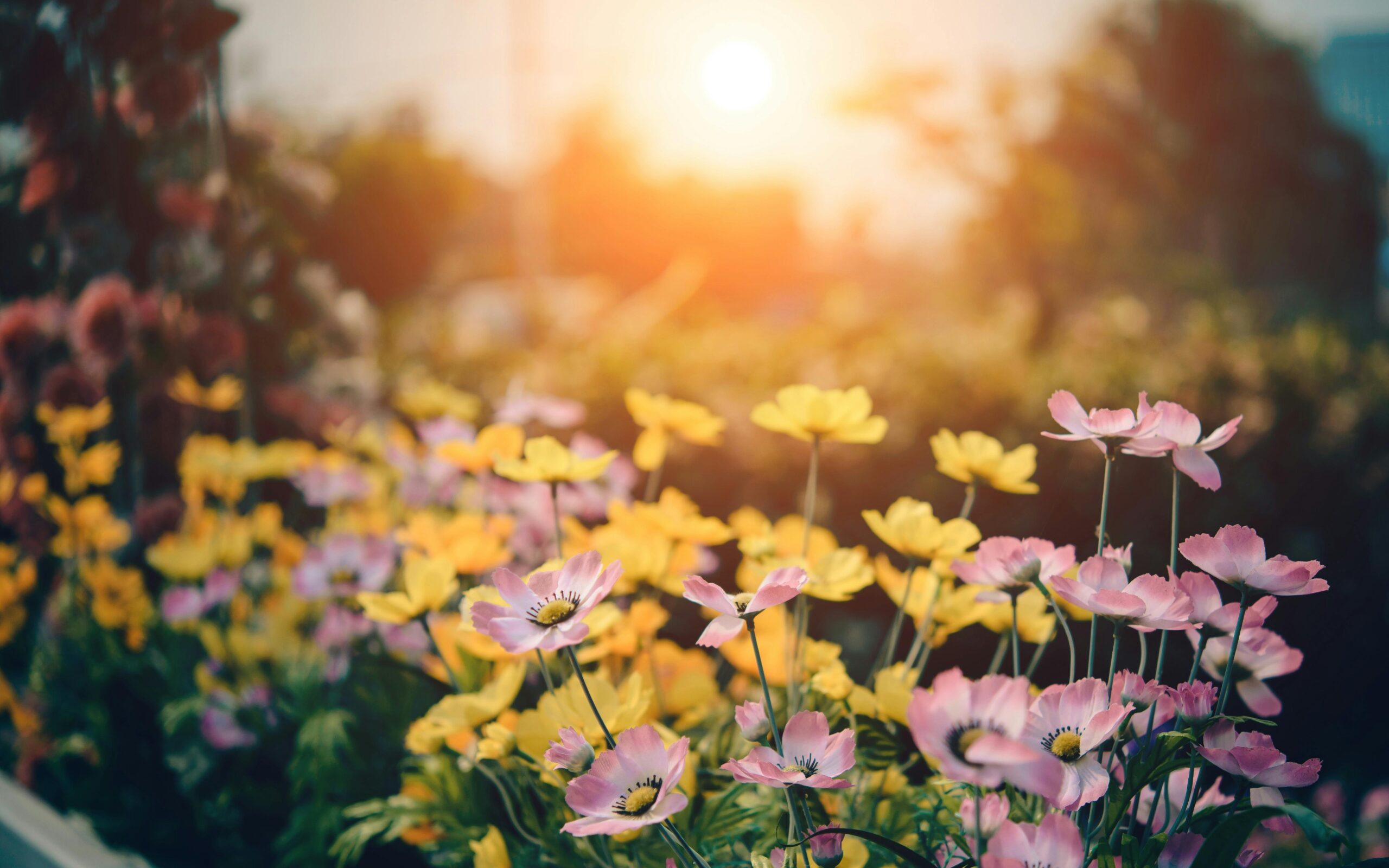
[…] Best Easy-to-Grow Outdoor Plants for Beginners […]